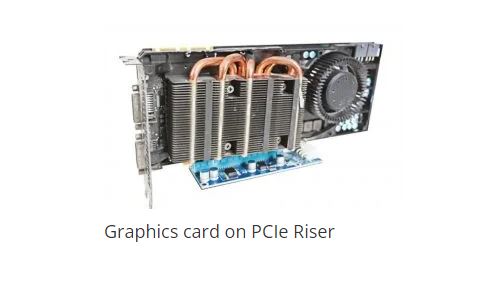Quick Navigation
Your gaming PC will look its best when your GPU is mounted vertically. Your GPU will look even more attractive if it is lit up with RGB lights. Mounting your graphics vertically inside your case has no performance advantage.
There will be no increase in average frame rates. Only the chassis looks attractive, and that’s the only advantage.
As a matter of fact, the top side is much less appealing than its bottom side. GPUs usually have RGB lights, fans, and shiny labels here.
The majority of PC cases and motherboards are designed so that the top panel faces you, blocking you from seeing the GPU in its glory.
There are some aesthetic benefits to mounting a graphics card vertically, but there are also some disadvantages. First, there is GPU sag. In order to prevent GPU sag, special brackets can be used. Graphics cards sag when they are too heavy for the bracket or PCB on which they are mounted.
GPUs installed vertically also prevent you from accessing other PCIe slots on your motherboard. Consequently, you can’t install ethernet, Wi-Fi, or sound cards there. GPUs can be mounted vertically in PC cases designed specifically for this purpose.
Best Ways How to Vertical Mount GPU
The following are the most effective methods for doing this:
PC Case
PC cases come in a variety of types. In most cases mount GPU horizontally. You will need to modify your PC case a lot if you plan to mount a graphics card vertically.
You can also install the GPU vertically right out of the box by buying a PC case that supports it.
There are several PC cases that are natively compatible with vertical GPU mounting, including the Corsair Crystal Series 680X RGB, the NZXT H510I, the Cooler Master Mastercase H500P Mesh, and the ASUS TUF Gaming GT501.
Utilizing PCIe Riser Cables or Mounting Plates
The vertical GPU mount can be achieved by installing a vertical mount plate or PCIe Riser cable if your PC case does not support vertical GPU mounting. Amazon and eBay are cheaper places to buy these.

How to install a GPU vertically
In the final step, you’ll have to mount the GPU vertically inside the PC case once all the necessary equipment has been acquired.
Your graphics card must first be removed from the PCIe x16 slot on your motherboard.
Within the PC case, you will need to install a vertical mount plate.
Next, connect the PCIe riser cable to the PCIe slot and the vertical mount plate to the other end.
You are now ready to mount your GPU vertically by plugging your GPU into the riser cable.
The video can also help you understand how this process works.

